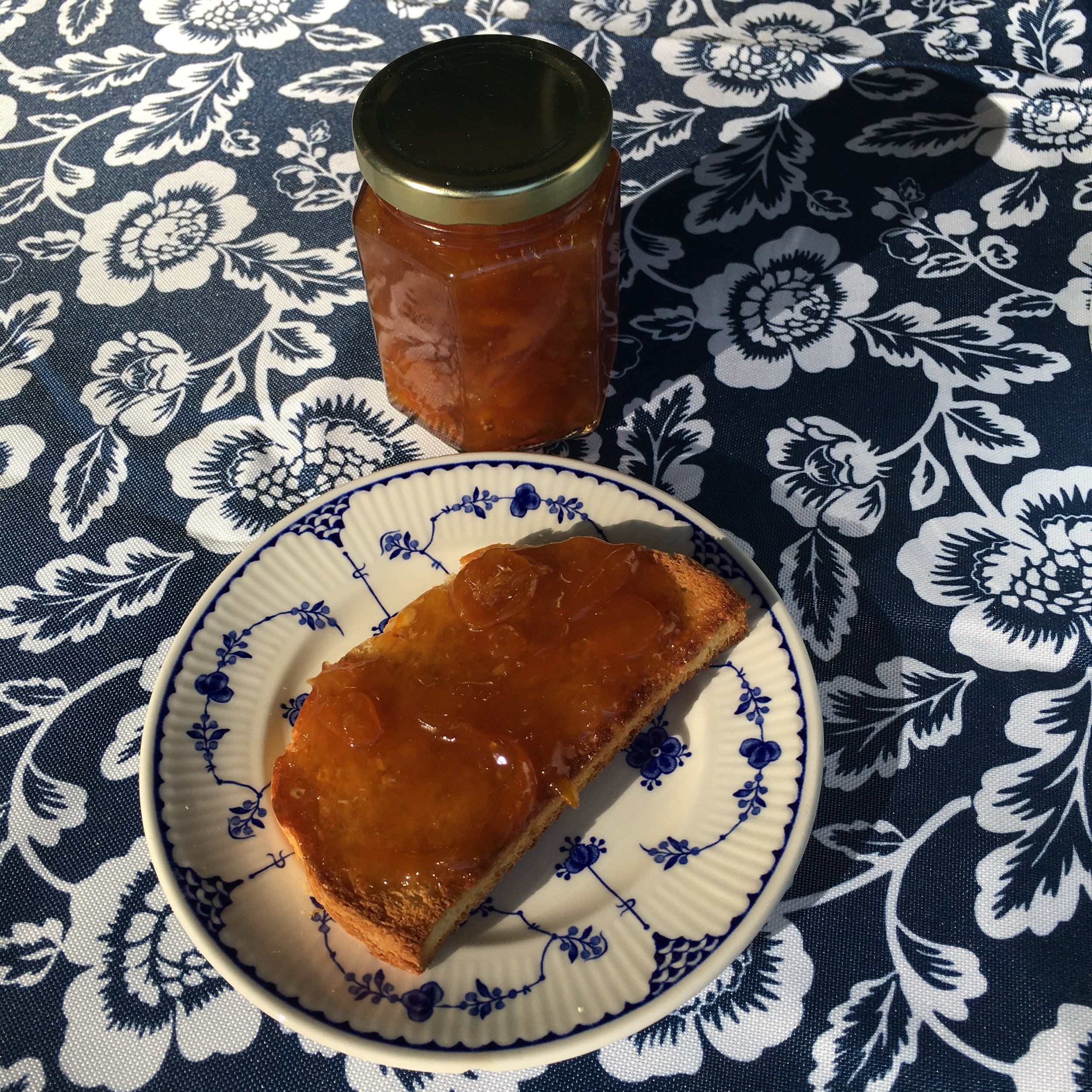You can usually slice crosswise to the middle of the kumquat before you encounter pips.
Boiling the fruit-liquid-sugar mixture.
I love kumquats, though I recall reading somewhere that Westerners only wanted kumquat trees as ornaments, and for a long time ignored the fruit. I myself have a couple of potted kumquats, but I have never disregarded the fruit. (I have two varieties, one of which has fruits as large as small lemons, the other having fruits more like dates.) The fruit is lovely thinly sliced and added to salads: the skin is tender and rather sweet, while the flesh has a lovely sharp tang. But what else can you do if you are lucky enough to come across a ripe harvest? Well, you can make marmalade. I prefer a relatively low-sugar, high-tartness marmalade that stays faithful to the fruit. My recipe is based on that of lemonsandanchovies.com, which in turn is based on Alice Waters’s book, Chez Panisse Fruit. My recipe differs (presumably from both) in that I increase the fruit in proportion to the other ingredients — and my version has not just plain granulated sugar but a mix of very light brown sugar and golden sugar (both cane), for a slightly darker marmalade. (I’m sure that palm sugar would also be wonderful, though it’s much more expensive than cane or beet sugar, and I haven’t tried it yet.)
One of my potted kumquat trees, with fruit the size of limes or small lemons.
The marmalade: deep honey-coloured, with fruit thoroughly softened and the liquid rather like jelly.
The method is easy. All you do is get a big pot or sauté pan, and put into it 1½ lbs of kumquats, thinly sliced and seeded; 2 cups of sugar; the juice of one lemon; and 2¼ cups water. That’s it. You bring the liquid to the boil, and then for the next half hour, on a fairly sedate boil throughout (medium to medium-high heat), you let the mixture cook and the water evaporate. Intermittent stirring is a good idea, particularly towards the end. It will be evident even before you remove the pan from the heat that the mixture has thickened: the acid of the lemon helps it set. Allow the marmalade to cool, and in the meantime, boil a kettle with enough water to pour over and into whatever jars you will be using, to sanitize them. Let the jars* air-dry, and then spoon the cooled marmalade into them. Refrigerate whatever you plan to use in the next week or so; the rest can be put in a freezer-safe container and frozen.
*The yield is sufficient to fill three 6-oz jars, with a bit left over.





























